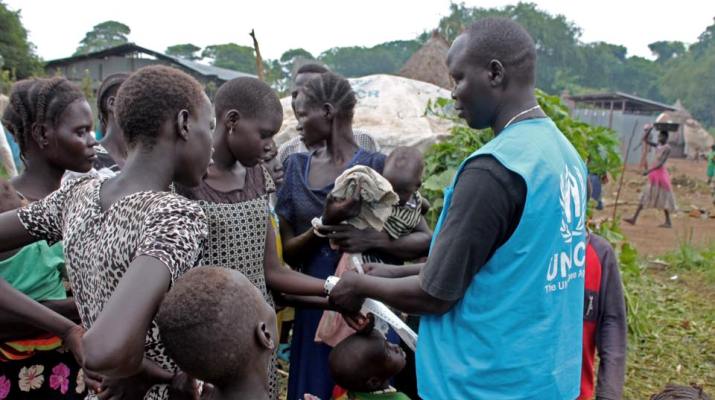Ethiopia sees surge in refugees from South Sudan, UN says

By Tesfa-Alem Tekle
March 18, 2017 (ADDIS ABABA) – The number of South Sudan refugees fleeing to neighbouring Ethiopia has seen a surge since the beginning of March, the UN refugee agency said on Saturday.
The United Nations High Commissioner for Refugees (UNHCR) in a statement it extended to Sudan Tribune Saturday said over 600 South Sudan refugees are crossing borders to Ethiopia in March on daily basis, due to the ongoing conflict and food scarcity.
“The daily arrival rate has significantly jumped from 103 persons in February and 199 in February to 660 so far in March,” it said.
Between 1 and 11 March 2017, a total of 7,258 South Sudanese refugees have arrived in Ethiopia’s Gambella region.
Of these, 3,967 arrived in the week of 6 to 11 March, representing a daily average arrival rate of 660 people.
The latest influx has brought the total number of South Sudanese refugees who have arrived in Ethiopia since September 2016 to 68,858.
All the new arrivals have gone through level-1 registration and were most of them relocated to Nguenyyiel refugee camp, one of South Sudan refugee camps in Gambela region bordering South Sudan.
Pagak, a border town of South Sudan continues to be the main entry point through which an increasing number of South Sudanese refugees are crossing into Gambella, Ethiopia.
Between 1 February and 11 March 2017, a total of 12,828 refugees crossed through Pagak.
So far in March, 7,258 arrivals were registered in Pagak and all, but 192, were relocated to Nguenyyiel refugee camp while other new arrivals remain in Pagak, awaiting relocation.
According to the latest report, 65% of the total registered new arrivals are children, including 15,488 unaccompanied and separated children.
A recent sample survey conducted in Pagak revealed that the new arrivals originated mainly from Upper Nile State (Nasir, Longechuk or Mathiang, Ulang and Maiwut Counties) and Jonglie State (Uror, Akobo and Ayod Counties).
Conflict and food insecurity were cited as the main reasons for leaving South Sudan.
The majority (87%) continue to be women and children. A good number of those who arrived in March originated from Bentiu.
According to the UN refugee agency, as of 15 March, Ethiopia hosted more than 356,000 South Sudanese refugees who originate mostly from Upper Nile and Jonglie States, as well as some from the Unity state.
In addition to registration and protection, WASH, Nutrition, Primary Health Care and other services are available and functioning well at the entry point.
As South Sudan refugees continue to flee to Ethiopia in large numbers, UNHCR in close collaboration with its Ethiopian partner, Administration for Refugees and Returnees Affairs (ARRA) is in the process of ensuring maximum preparedness by reviewing the capacity of Nguenyiel camp and the identification of possible sites for new camps.
“With Nguenyyiel quickly reaching its capacity and no readily available site for establishing additional camps in the Gambella region, the possibility of transferring new arrivals to the Benishangul- Gumuz Region is being considered,” the agency said.
“UNHCR and ARRA are in the process of identifying a suitable site in that region” it added.
Given the ongoing conflict and food insecurity in the newest nation, UNHCR together with ARRA and other partners, have also finalised a draft Contingency Plan to respond to the possibility of a renewed influx of refugees from South Sudan.
The draft contingency plan foresees the arrival of potential more refugees in Ethiopia and fund shorting.
(ST)
